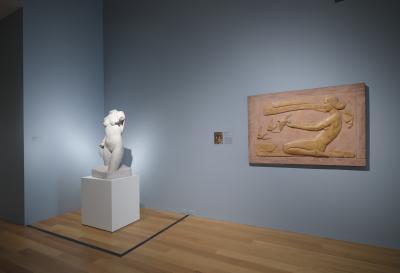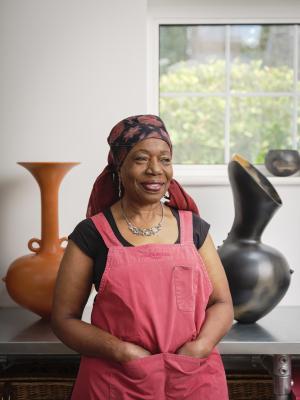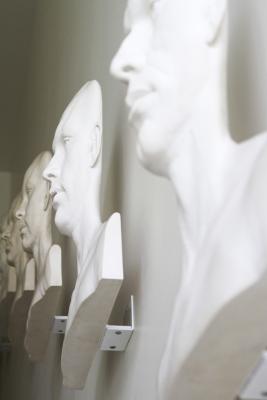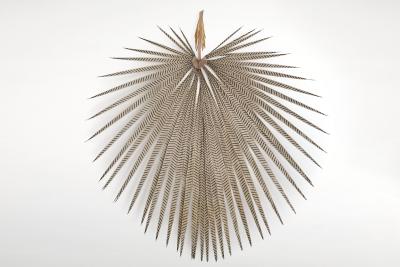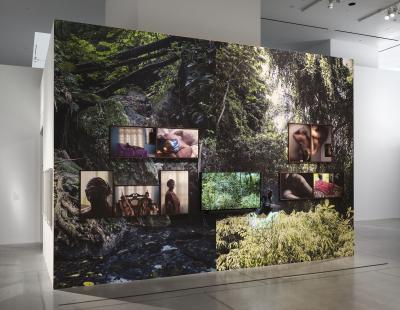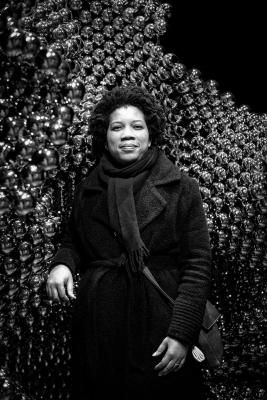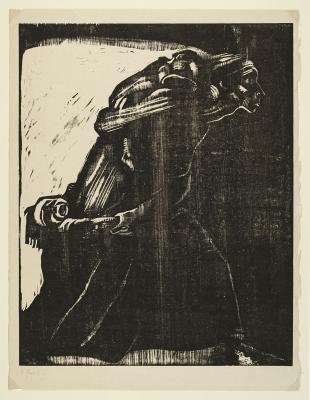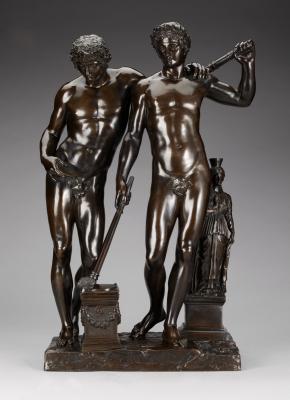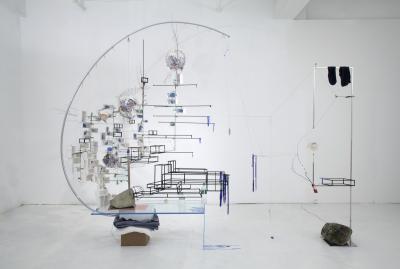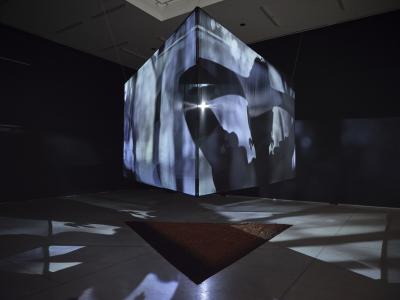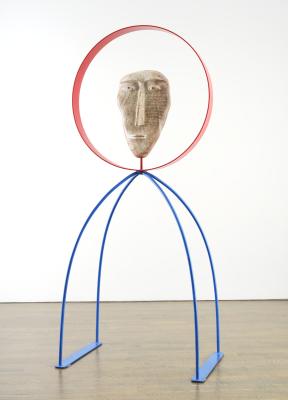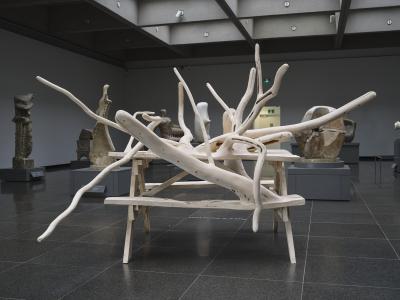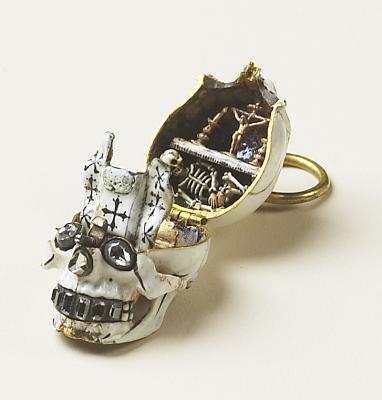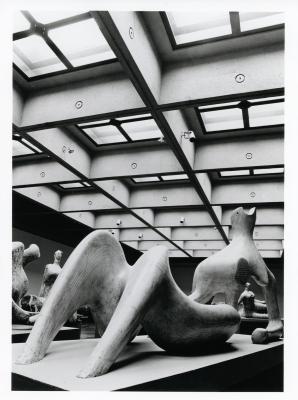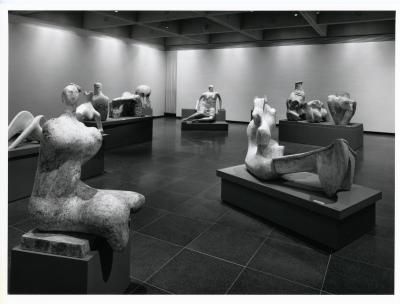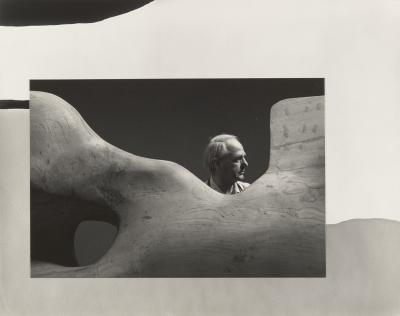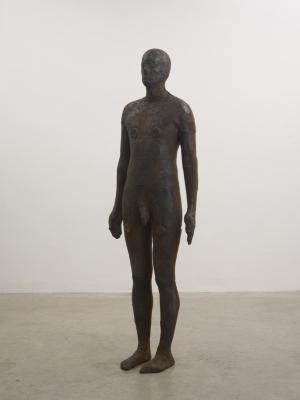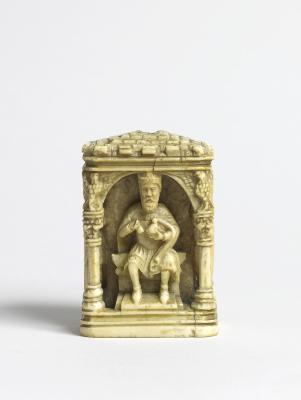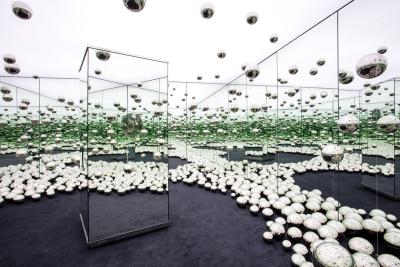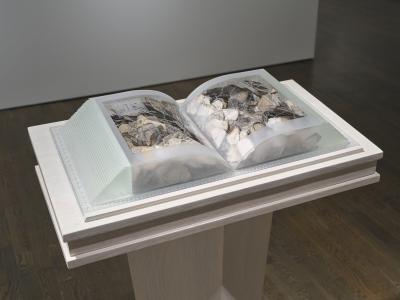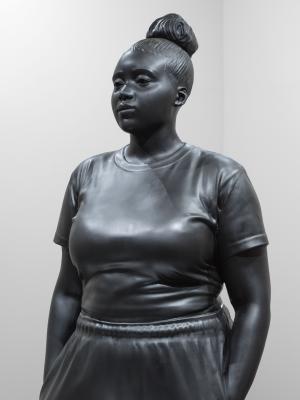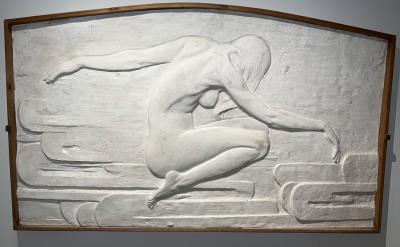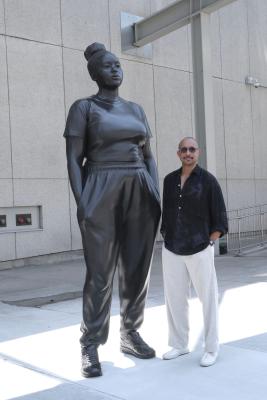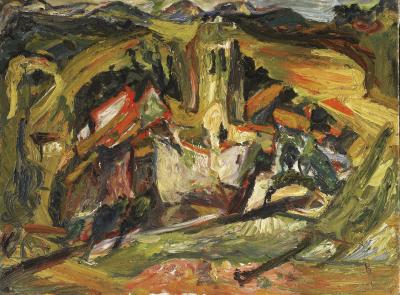What is memento mori?
A 16th century European art genre lights up in the dark at the AGO
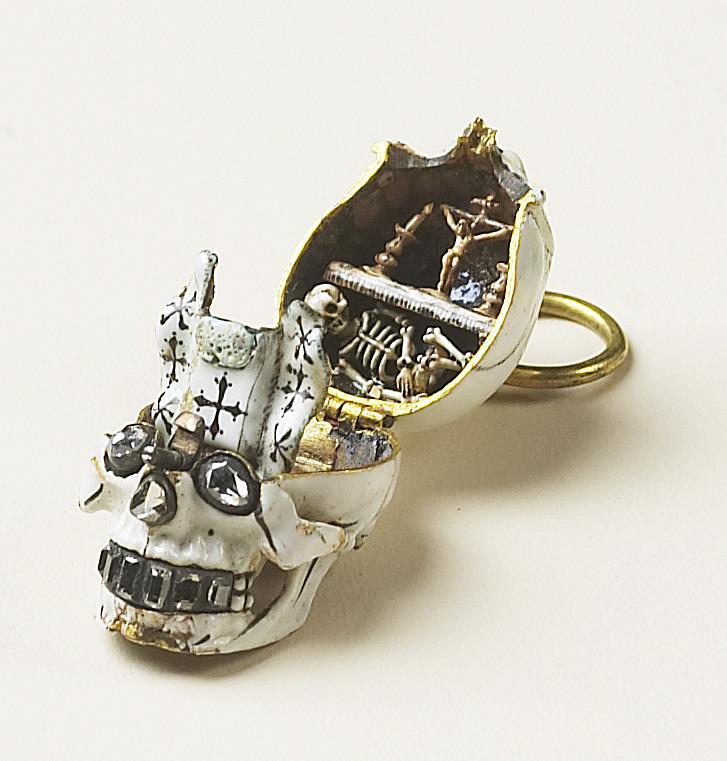
English or Dutch. Skull Pendant: Crucifixion on Altar, and Skeleton, 17th century. Gold, enamel, diamonds, Open: 1.4 × 1.2 × 4 cm. The Thomson Collection at the Art Gallery of Ontario. Photo © AGO
The phrase memento mori is Latin for “remember that you must die”. In the art world, a genre with the same name gained popularity throughout Europe in the 1500s. The most common motif depicted in the genre is a skull, often accompanied by bones. Others include coffins, hourglasses and wilting flowers. With ancient roots in Stoic philosophy, memento mori art serves as a reminder of inevitable death and the fragility of life.
Hidden in a dimly lit gallery on Level 1 at the AGO is a wide-ranging collection of memento mori artworks. Amongst them is a group of skulls featuring a crafting technique called enamelling in ronde-bosse. Developed in France in the late 1300s, ronde-bosse refers to the production of small three-dimensional figures or sculptures largely or entirely covered in colourful enamel. With this technique, metal surfaces are concealed underneath opaque enamel – giving them a completely new outward appearance and finish.
The skulls are covered in white enamel to resemble the colour of a human skull. Not only are these objects incredibly small, but they are also intricate in detail. Many of them open on hinges to reveal an even smaller skeletal figure inside the skull (see image above).
This skull not only has another figure inside of it, but it also features diamonds for its eyes and teeth.
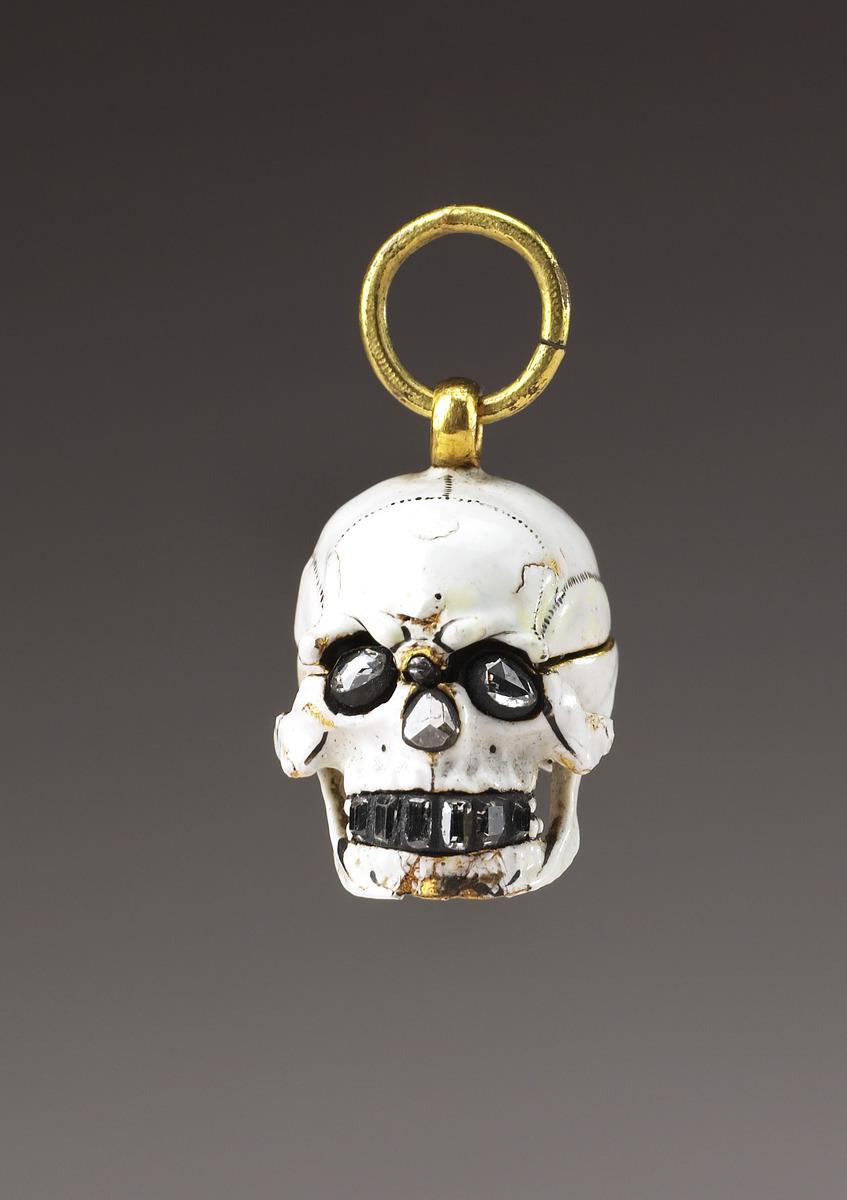
English or Dutch. Skull Pendant: Crucifixion on Altar, and Skeleton, 17th century. Gold, enamel, diamonds, Open: 1.4 × 1.2 × 4 cm. The Thomson Collection at the Art Gallery of Ontario. Photo © AGO
This miniature full-body skeleton in white enamel is safely stored in a mini coffin dangling on a chain.
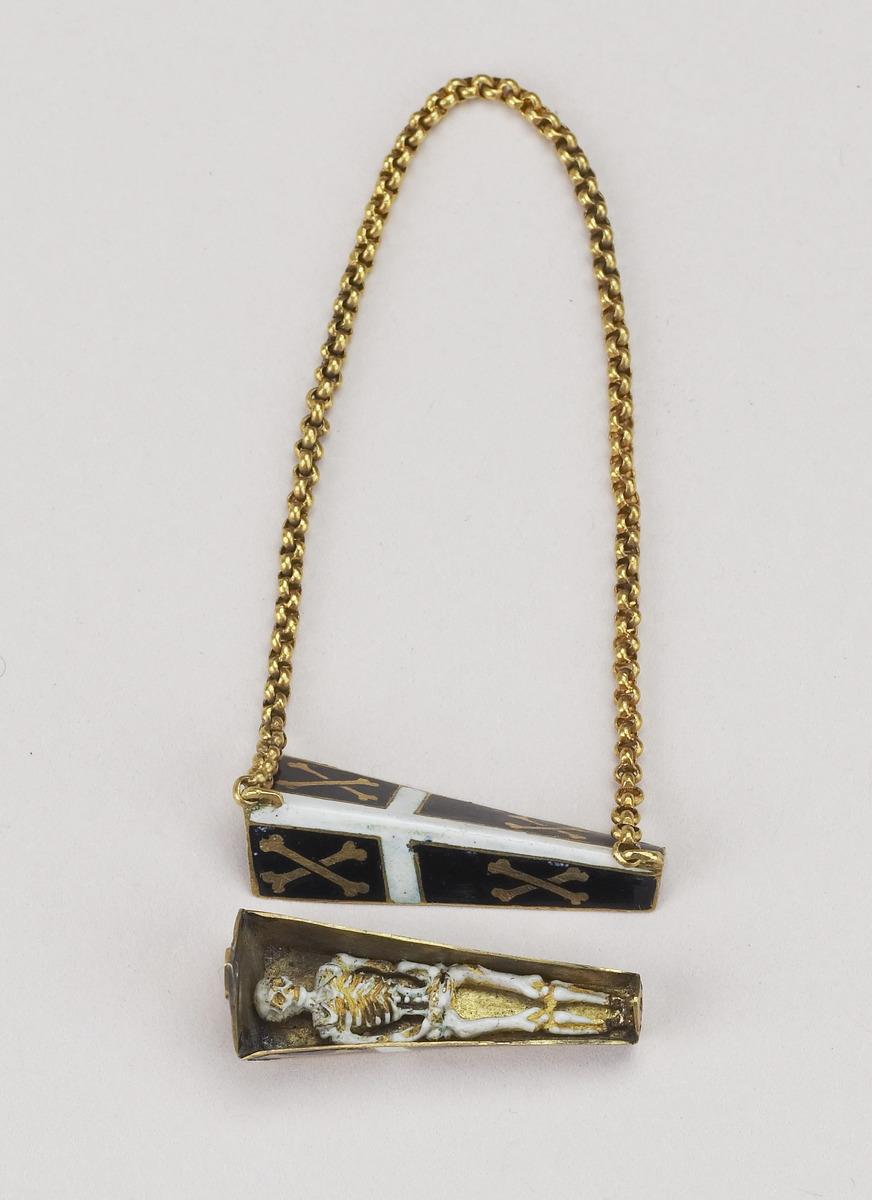
German (Southern). Coffin Pendant with Skeleton, late 16th century. Gold, enamel, Closed: 1 × 0.7 × 2 cm. The Thomson Collection at the Art Gallery of Ontario. Photo © AGO.
Scattered around these skull pendants are also several carved works made from Ivory depicting skeletal figures in varying poses. On the left side of the display is an Ivory sculpture of a youth peacefully lounging on a skull pillow with their eyes closed.
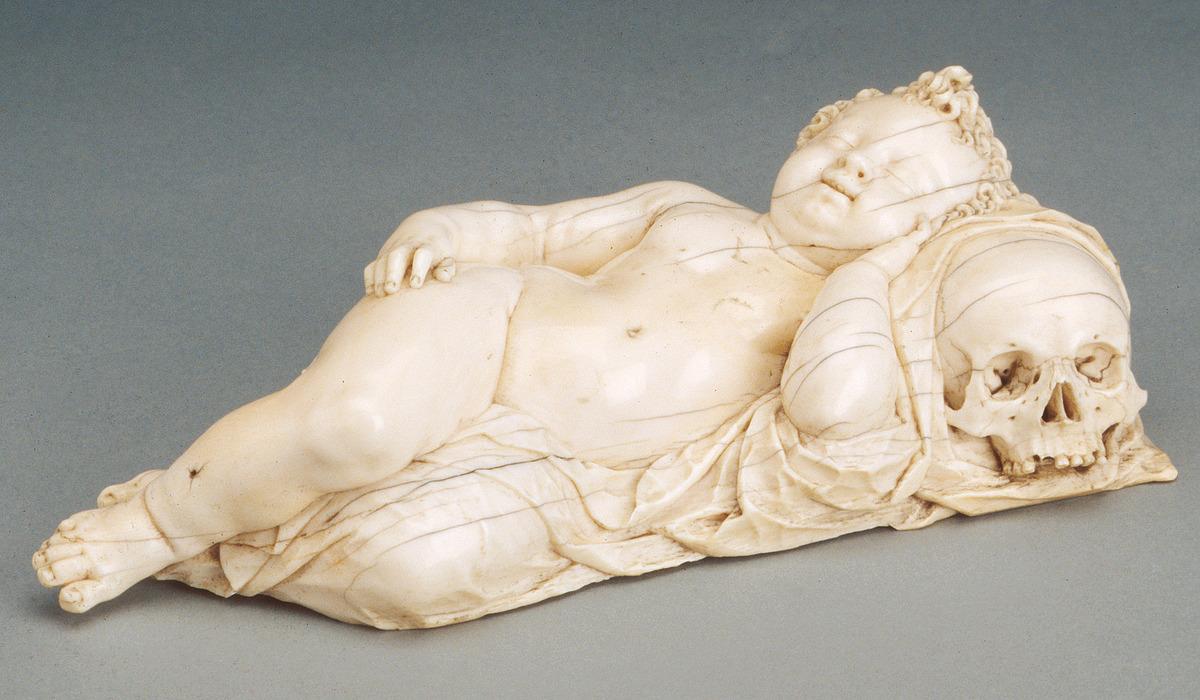
German (Augsburg or Munich), Allegory of Youth and Death, early 17th century. Ivory, Overall (with base): 7.3 x 22.6 x 9.4 cm. The Thomson Collection at the Art Gallery of Ontario. Photo: Larry Ostrom. AGOID.29271
On the top right is an Ivory plaque titled The Dance of Death, a popular theme and artistic genre that emphasized mortality as a great unifier. This theme commonly appears in murals, poetry, woodcut prints and music.
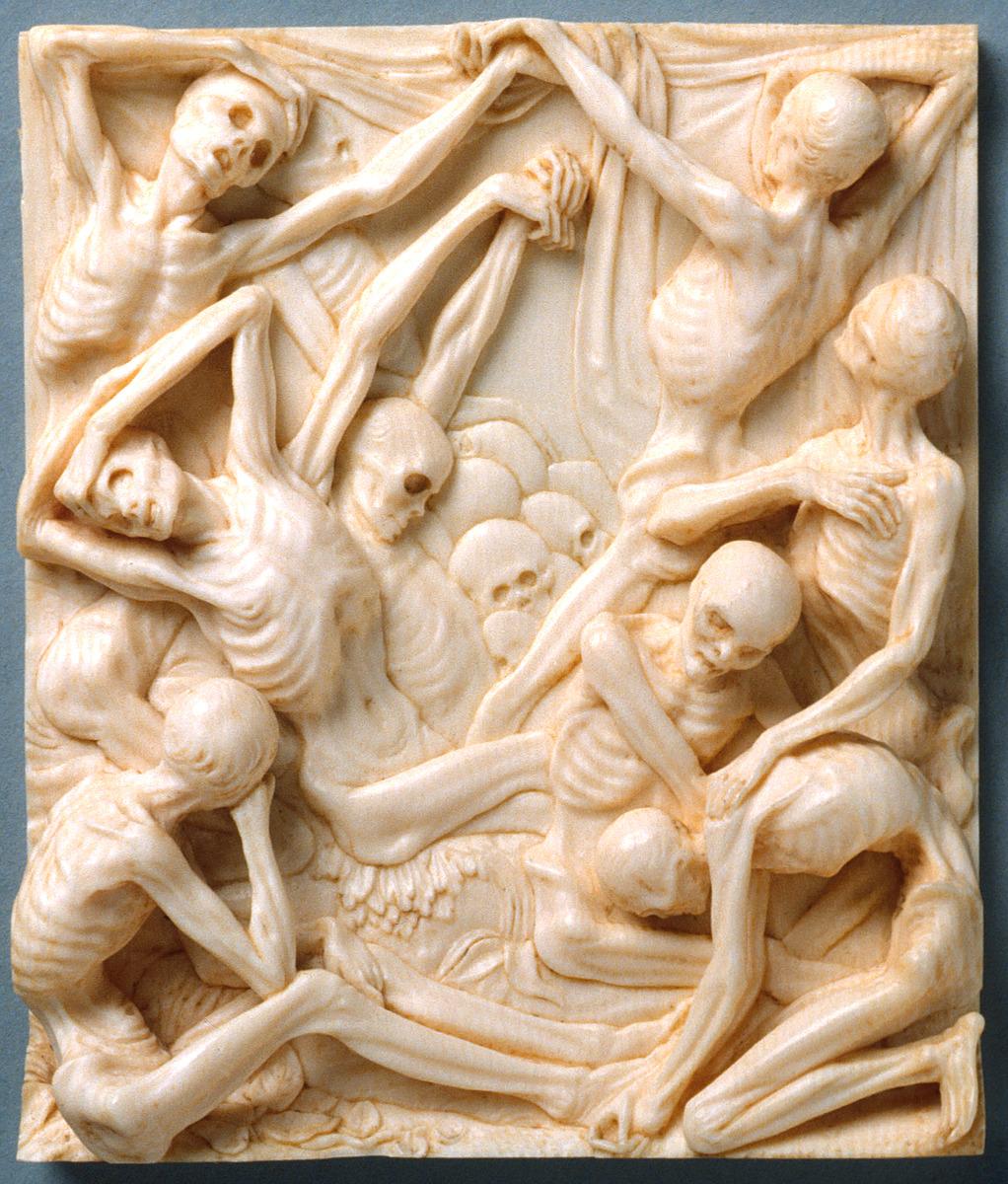
Leonhard Kern. The Dance of Death, mid-17th century. ivory, Overall: 10.2 x 8.9 x 2.5 cm. The Thomson Collection at the Art Gallery of Ontario. Photo: Larry Ostrom. AGOID.29506
Find this group of memento mori works on view on Level 1 of the AGO in the Thomson Collection of European Art (gallery 111).

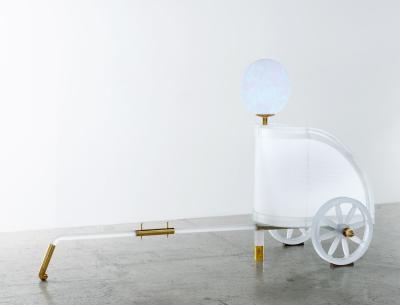
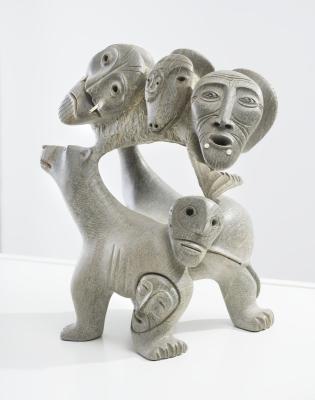


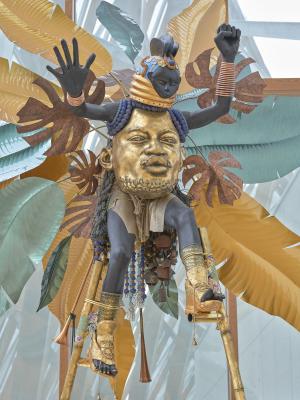


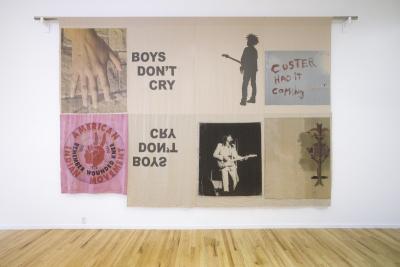
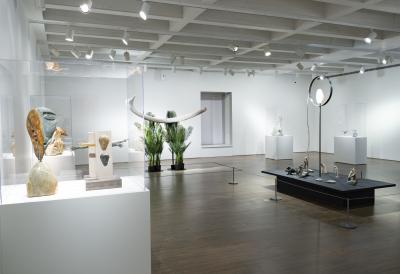
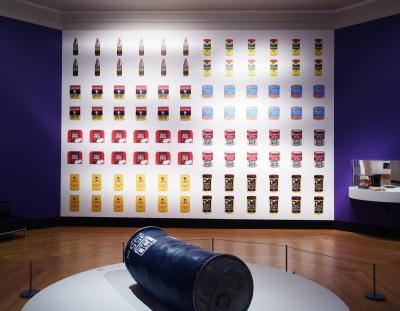


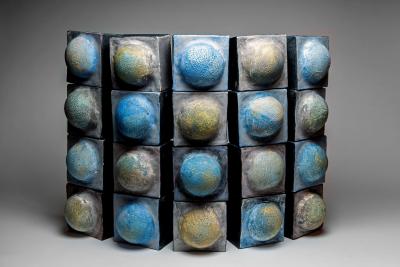
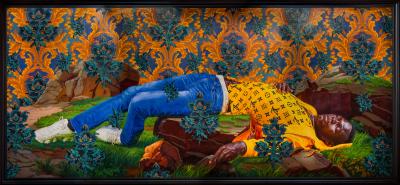
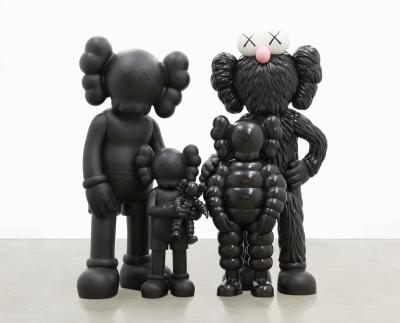
![Keith Haring in a Top Hat [Self-Portrait], (1989)](/sites/default/files/styles/image_small/public/2023-11/KHA-1626_representation_19435_original-Web%20and%20Standard%20PowerPoint.jpg?itok=MJgd2FZP)

